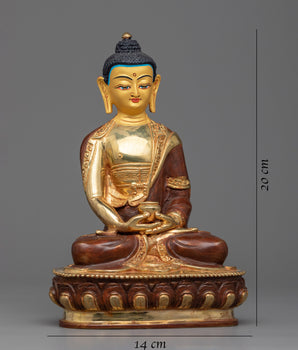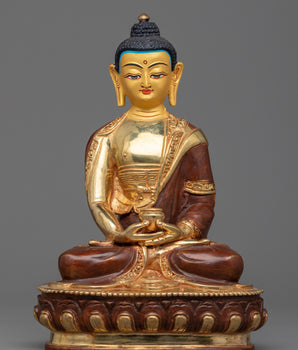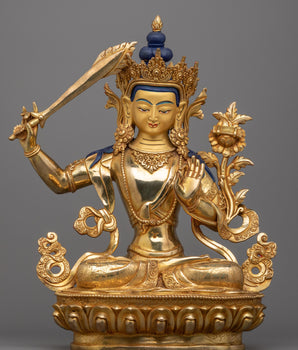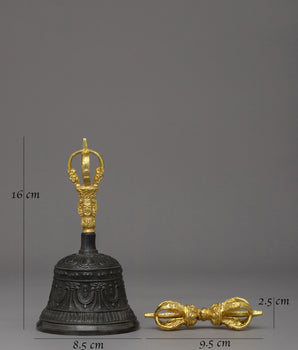The Himalayan Buddhist Art of Amitayus | Spiritual Longevity
-------------------------------------------
Size: 6.7”/17cm (Height) x 4.7”/12cm (Base)
Weight: 0.69 kg
Material: 24K Gold Gilded, Gold & Acrylic Paintings, Copper Body, Gemstones
-------------------------------------------
About Our Statue :
Himalayan Buddhist Art of Amitayus, measuring 6.7”/17cm in height and 4.7”/12cm at the base, is crafted from copper and adorned with 24K gold gilding, elegant gold and acrylic paintings, and inlaid gemstones. It weighs 0.69 kg. Revered as the Buddha of Long Life, this statue is a meaningful addition to any altar or spiritual space, symbolizing longevity, vitality, and boundless compassion.
Amitayus is represented sitting in a meditative posture, indicating his vast wisdom and unwavering concentration. His hands are in dhyana mudra, holding a kalasha, a holy vase filled with the nectar of immortality, representing his function as the giver of long life and energy. His calm demeanor radiates compassion and inner peace, Inspiring practitioners to practice mindfulness and tranquility.
Amitayus, of the Aparimitagunasamchaya or Amitavyhavat pure world, is typically depicted in his apparitional Buddha form (sambhogakaya), characterized by a red color, a crown, and jewels, and holding a long-life vase in both hands in a meditative gesture. A Buddha is said to have three bodies in the Mahayana Buddhist tradition: a form body (nirmanakaya), an apparitional body (sambhogakaya), and an ultimate truth body (dharmakaya).
Introduction to Amitayus Buddha
Amitayus, often referred to as "The Buddha of Endless Life," is a sambhogakaya aspect of Amitabha, commonly associated with longevity and immortality. He is frequently depicted reclining and holding a vase with the nectar of immortality. One of the three gods of immortality, Amitayus, is one of the three gods of immortality.
How do you take care of your statues?
• Place them at room temperature, avoiding direct sunlight.
• Make sure that the area where your statue is placed is entirely free of moisture and dust.
• Place it at the highest place on your altar after being consecrated by the Lama/monks. The best practice is to keep them covered inside a glass cabinet.
• Do not use your bare hands or any objects with a rough surface to wipe the face. Directly touching objects with the bare hand can smudge the face, leaving scratches.



































